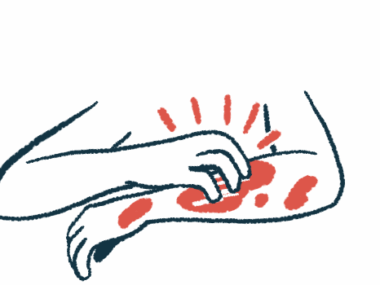Lip gland biopsies may not predict Sjögren’s diagnosis: Study
Samples with low inflammation levels could yield different conclusions
Written by |

Lip salivary gland biopsy may not be predictive of a Sjögren’s syndrome diagnosis, particularly when it’s based on tissue samples classified as showing a low level of inflammation and damage, according to a study.
In 16% of the cases assessed in the study, different pathology teams would draw different conclusions from the same sample, the researchers found.
“With the risk of complications associated with a [lip gland biopsy], alternative investigations should always be considered. It is good practice to exhaust all minimally invasive techniques, like [radiography, blood tests, and ultrasounds], before resorting to an invasive and potentially harmful biopsy,” the researchers wrote.
The study, “The Value of Labial Gland Biopsies as a Diagnostic Test for Sjögren’s Syndrome,” was published in Head and Neck Pathology.
Sjögren’s syndrome is an autoimmune disorder that primarily affects the glands producing tears and saliva, leading to dryness in the eyes and mouth.
Most invasive means of Sjogren’s diagnosis
Of all the methods available to reach a Sjögren’s diagnosis, labial gland biopsy is the most invasive. It involves removing minor salivary glands from the lower lip to assess the degree and severity of inflammation.
Although a positive result is considered one of the most objective criteria for a diagnosis, the procedure is associated with a risk of long-term alterations in lip sensation.
“Given these risks, the importance and usefulness of a histological diagnosis for [Sjögren’s syndrome] should be examined,” the researchers wrote, noting that their aim in this study was to determine “if the diagnostic value of the [lip gland biopsy] is significant enough to warrant the surgical procedure and its associated risks.”
With that goal in mind, they set out to assess the degree of agreement in confirming or excluding the diagnosis of Sjögren’s among members of the same pathology team who analyzed 50 lip gland biopsy samples. None of the members of the current team was involved in the original diagnoses.
All samples were considered adequate for assessment, with all the original pathology reports referring to a focus score based on the Tarpley grading system. This grading system is used to classify the degree of immune cell infiltration — a sign of inflammation — and damage to salivary gland tissue. It ranges from 0 (normal or mild inflammation) to 4+ (immune cell infiltration, with or without scarring, completely destroying salivary gland structure).
For 43 cases, there were also records of blood test results, including tests for the detection of antinuclear autoantibodies (self-reactive antibodies that target components of the cell nucleus, where genetic information is stored) that are sometimes found in people with Sjögren’s.
In 84% of the cases, there was a consensus between the research team and the original reports on whether or not biopsy findings were supportive of a Sjögren’s diagnosis. In 18% of the cases, observations were unanimously considered to be consistent with a diagnosis of Sjögren’s, while in 66% they were not found to be consistent with the disease.
‘Subjective’ measure
In 16% of the cases, the researchers reached a different conclusion than that stated in the original report, which the team said “highlights that the examination of these [samples] is subjective and should not be considered definitive in isolation.”
A lower degree of consensus was seen for the Tarpley grading system, with complete agreement between the two teams being reached in 58% of the cases.
“The disagreement was largely seen between the scores ‘0’ and ‘1+’, again highlighting the subjectivity of these scores,” the researchers wrote.
In several cases, there was an agreement with the score, but a disagreement on whether or not it supported a Sjögren’s diagnosis. According to the researchers, “this reflects the flaws of the current grading system and the potential overlap of [Sjögren’s] with non-specific inflammation of the minor [salivary] glands.”
The correlation between the original reports and blood test results was also analyzed. In 79% of the cases, the results of antinuclear antibodies were consistent with the original conclusion of the biopsy report. There were no cases in which patients tested positive for antinuclear antibodies and had a focus score of 0. However, there was a high number of cases in which focus scores were elevated and blood test results were not suggestive of Sjögren’s.
The rate of complications following tissue collection was also assessed. This analysis showed that 27% of the patients experienced numbness at the biopsy site and surrounding areas, while 20% reported abnormal sensations. One patient had persistent scarring and discomfort.
“We believe the current system for assessing and scoring these biopsies is too ambiguous in nature,” the researchers wrote, adding that “a more appropriate system may be one that introduces more detail, guidance and categories.”







